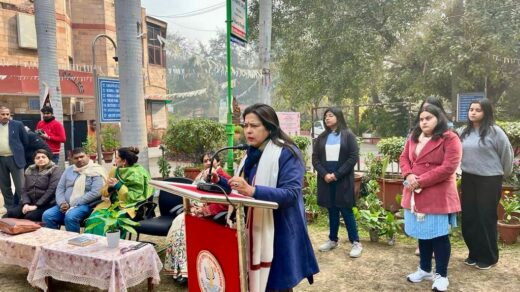In November, the India Meteorological Department forecast a warmer than normal winter (December to February) in most parts of India. The weather office, which uses the Monsoon Mission Coupled Forecasting System (MMCFS) model for its seasonal forecasts had said there is relatively ‘high probability’ for above normal minimum temperatures in the ‘core cold wave zone’ which includes Punjab, Himachal Pradesh, Uttarakhand, Delhi, Haryana, Rajasthan, Uttar Pradesh, Gujarat, Madhya Pradesh, Jammu and Kashmir among other regions.
Ironically, it’s many of these regions, especially the northern plains and the northern states that are experiencing cold weather. On Friday, for instance, the minimum temperature in Delhi was 6.4 degrees Centigrade (C) in the morning, two degrees below normal. On Thursday, the minimum temperature was even lower at 5.2 degrees C. Already, till Thursday, this week has seen three so-called ‘severe cold days’. According to IMD, a ‘severe cold day’ is registered when two things happen — the minimum temperature drops to less than 10 degrees C and the maximum temperature is at least 6.4 degree C below normal. It isn’t Delhi alone. All of north India including Punjab, Haryana and Uttar Pradesh has been reeling under a cold spell.
Meteorologists said the average winter temperature may still be above normal despite extreme cold spells.
‘These kind of spells can happen and go off. The forecast was for the entire December to February season. Even with these spells the season’s average can be normal or above normal. , forecasts only indicate a trend,’ said M Rajeevan Nair, secretary, ministry of earth sciences. ‘The spell we are seeing is typical of winter months with fog in the morning hours that doesn’t allow sunlight in so the maximum temperature or day temperature is very low. Such spells may happen again,’ he added.
‘It’s too early to say how average temperatures will be in north India this winter. It may be in the normal range. The seasonal outlook had indicated above normal winter temperatures more for central and peninsular India where we are expecting clouding and moisture incursion. For core cold wave zone also it’s difficult to say now how January and February will turn out to be,’ said Kuldeep Shrivastava, head, Regional Weather Forecasting Centre. Actually, IMD’s forecast specifically said winter would be warmer in the so-called core cold wave zone, in addition to central and peninsular India. The core cold wave zone comprises Punjab, Himachal Pradesh, Uttarakhand, Delhi, Haryana, Rajasthan, Uttar Pradesh, Gujarat, Madhya Pradesh, and Jammu and Kashmir.
‘Due to persistence of low clouds over northern parts of the country, the prevailing cold day to severe cold day conditions very likely to continue in some to most pockets over Punjab, Haryana, Chandigarh, Delhi, Uttar Pradesh, Bihar and in isolated pockets over Jammu & Kashmir, Himachal Pradesh and sub-Himalayan West Bengal and Sikkim during next 2 days. Its intensity and spread very likely to decrease over above areas thereafter,’ IMD’s morning bulletin on Friday said.
IMD uses the Monsoon Mission Coupled Forecasting System (MMCFS) model for its seasonal forecasts.
Meteorologists have attributed the unusually cold conditions to the western disturbance (WD) which brought heavy snowfall in the Himalayan region — Uttarakhand, Jammu and Kashmir and Himachal Pradesh — and rainfall across the northern plains, including in Delhi on December 12 and 13. ‘That western disturbance has moved away now. But the rains left a lot of moisture in the atmosphere. There were very strong north-westerly winds which brought cold winds from snow clad mountains. The combination and the cold is causing dense fog. We had no sun for three days, naturally temperature went down. We are expecting temperature to go up briefly because of an approaching western disturbance. But the temperatures are so low already we cannot say it will make a noticeable difference,’ said K Sathi Devi, head of the National Weather Forecasting Centre, IMD











